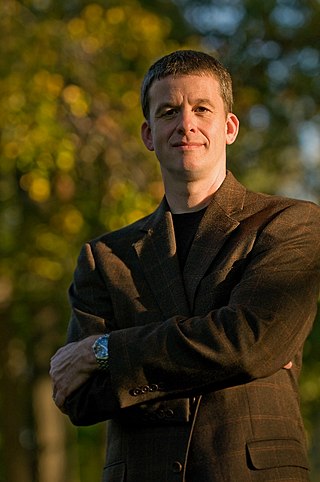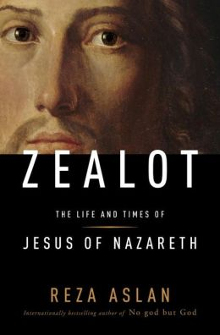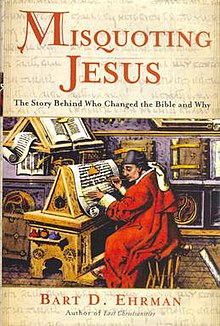The New Testament (NT) is the second division of the Christian biblical canon. It discusses the teachings and person of Jesus, as well as events in first-century Christianity. The New Testament's background, the first division of the Christian Bible, is called the Old Testament, which is based primarily upon the Hebrew Bible; together they are regarded as sacred scripture by Christians.

The Jesus Seminar was a group of about 50 biblical criticism scholars and 100 laymen founded in 1985 by Robert Funk that originated under the auspices of the Westar Institute. The seminar was very active through the 1980s and 1990s, and into the early 21st century.
Biblical studies is the academic application of a set of diverse disciplines to the study of the Bible. For its theory and methods, the field draws on disciplines ranging from ancient history, historical criticism, philology, theology, textual criticism, literary criticism, historical backgrounds, mythology, and comparative religion.
The term "historical Jesus" refers to the reconstruction of the life and teachings of Jesus by critical historical methods, in contrast to religious interpretations. It also considers the historical and cultural contexts in which Jesus lived. Virtually all scholars of antiquity accept that Jesus was a historical figure, and attempts to deny his historicity have been consistently rejected by the scholarly consensus as a fringe theory.

Biblical criticism is the use of critical analysis to understand and explain the Bible. During the eighteenth century, when it began as historical-biblical criticism, it was based on two distinguishing characteristics: (1) the scientific concern to avoid dogma and bias by applying a neutral, non-sectarian, reason-based judgment to the study of the Bible, and (2) the belief that the reconstruction of the historical events behind the texts, as well as the history of how the texts themselves developed, would lead to a correct understanding of the Bible. This sets it apart from earlier, pre-critical methods; from the anti-critical methods of those who oppose criticism-based study; from the post-critical orientation of later scholarship; and from the multiple distinct schools of criticism into which it evolved in the late twentieth and early twenty-first centuries.

The Christ myth theory, also known as the Jesus myth theory, Jesus mythicism, or the Jesus ahistoricity theory, is the view that the story of Jesus is a work of mythology with no historical substantiality. Alternatively, in terms given by Bart Ehrman paraphrasing Earl Doherty, "the historical Jesus did not exist. Or if he did, he had virtually nothing to do with the founding of Christianity."
Craig L. Blomberg is an American New Testament scholar. He is currently the Distinguished Professor Emeritus of the New Testament at Denver Seminary in Colorado where he has been since 1986. His area of academic expertise is the New Testament. This includes parables, miracles, historical Jesus, Luke-Acts, John, 1 Corinthians, James, the historical trustworthiness of Scripture, financial stewardship, gender roles, Latter Day Saint movement, hermeneutics, New Testament theology, and exegetical method. Blomberg has written and edited multiple books.
Criticism of Christianity has a long history which stretches back to the initial formation of the religion in the Roman Empire. Critics have challenged Christian beliefs and teachings as well as Christian actions, from the Crusades to modern terrorism. The arguments against Christianity include the suppositions that it is a faith of violence, corruption, superstition, polytheism, homophobia, bigotry, pontification, abuses of women's rights and sectarianism.

Disputes regarding the internal consistency and textual integrity of the Bible have a long history.
Criticism of the Bible is the concerning about the factual accuracy of the claims and the moral tenability of the commandments made in the Bible, the holy books of Christianity, Judaism, and other religions. Devout Christians have long regarded their Bible as the perfect word of God. In addition to concerns about ethics in the Bible, about biblical inerrancy, or about the historicity of the Bible, there remain some questions of biblical authorship and as to what material to include in the biblical canon.

Bart Denton Ehrman is an American New Testament scholar focusing on textual criticism of the New Testament, the historical Jesus, and the origins and development of early Christianity. He has written and edited 30 books, including three college textbooks. He has also authored six New York Times bestsellers. He is the James A. Gray Distinguished Professor of Religious Studies at the University of North Carolina at Chapel Hill.

Robert McNair Price is an American New Testament scholar who argues in favor of the Christ myth theory – the claim that a historical Jesus did not exist. Price is the author of a number of books on biblical studies and the historicity of Jesus.

Daniel Baird Wallace is an American professor of New Testament Studies at Dallas Theological Seminary. He is also the founder and executive director of the Center for the Study of New Testament Manuscripts, the purpose of which is digitizing all known Greek manuscripts of the New Testament via digital photographs.

Michael R. "Mike" Licona is an American New Testament scholar and author. He is Professor of New Testament Studies at Houston Christian University, Extraordinary Associate Professor of Theology at North-West University and the director of Risen Jesus, Inc. Licona specializes in the resurrection of Jesus, and in the literary analysis of the Gospels as Greco-Roman biographies.
Craig Alan Evans is an American biblical scholar. He is a prolific writer with 70 books and over 600 journal articles and reviews to his name.

Jesus, Interrupted: Revealing the Hidden Contradictions in the Bible is a book by Bart D. Ehrman, a New Testament scholar at University of North Carolina at Chapel Hill. Published by HarperCollins in March 2009, the work includes a narrative of Ehrman's own progression in Biblical studies and beliefs, an overview of the issues raised by scholarly analysis of the Bible, details of a selection of findings from such analysis, and an exhortation regarding the importance of coming to understand the Bible more fully.
The historical reliability of the Gospels is evaluated by experts who have not found a complete consensus. While all four canonical gospels contain some sayings and events which may meet one or more of the five criteria for historical reliability used in biblical studies, the assessment and evaluation of these elements is a matter of ongoing debate. Virtually all scholars of antiquity agree that a human Jesus existed, but scholars differ on the historicity of specific episodes described in the biblical accounts of Jesus, and the only two events subject to "almost universal assent" are that Jesus was baptized by John the Baptist and was crucified by the order of the Roman Prefect Pontius Pilate. Elements whose historical authenticity is disputed include the two accounts of the Nativity of Jesus, the miraculous events including the resurrection, and certain details about the crucifixion.
Historical criticism, also known as the historical-critical method or higher criticism, is a branch of criticism that investigates the origins of ancient texts in order to understand "the world behind the text". While often discussed in terms of Jewish and Christian writings from ancient times, historical criticism has also been applied to other religious and secular writings from various parts of the world and periods of history.

Zealot: The Life and Times of Jesus of Nazareth is a book by Iranian-American writer and scholar Reza Aslan. It is a historical account of the life of Jesus that analyzes religious perspectives on Jesus as well as the creation of Christianity. It was a New York Times best seller. Aslan argues that Jesus was a political, rebellious and eschatological Jew whose proclamation of the coming kingdom of God was a call for regime change, for ending Roman hegemony over Judea and the corrupt and oppressive aristocratic priesthood. The book has been optioned by Lionsgate and producer David Heyman with a script co-written by Aslan and Oscar- screenwriter, James Schamus.

Christian sources, such as the New Testament books in the Christian Bible, include detailed accounts about Jesus, but scholars differ on the historicity of specific episodes described in the biblical accounts of Jesus. The only two events subject to "almost universal assent" are that Jesus was baptized by John the Baptist and was crucified by the order of the Roman Prefect Pontius Pilate.










